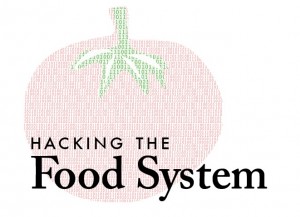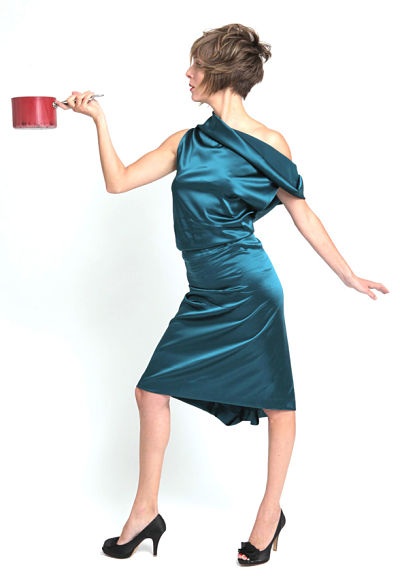 [Hacking the Food System is an online conversation exploring how technology, information and data can change the food system status quo. Join the conversation below, on Twitter (hashtag #foodtech), or Facebook.]
[Hacking the Food System is an online conversation exploring how technology, information and data can change the food system status quo. Join the conversation below, on Twitter (hashtag #foodtech), or Facebook.]
36 years ago, my parents met at Thanksgiving.
My mom is French. My Dad is American.
She is dark haired. He is blonde.
They are an unlikely pair.
But in 1976 they sat down in front of a fireplace in Joliet, Illinois and he explained how to can tomato preserves like his grandmother did.
And my mother fell in love.
I do not postulate that the fate of our food system follows the same fate of my parents’ love story, but I do believe that if nations could form lasting relationships over the simple actions, rituals and meals that bond us together as humans, we would taste the delicious level of human-scaled economies again and maybe, for a brief moment, stop being “sick”. And start falling in love.
To preface the following proposal, I must cite that I am not a technologist. I am not a hacker.
I am a designer, photographer and visual artist.
My job, everyday, is to make you – yes, you, consumer – fall in love. I make people care about stuff by telling stories. Sometimes these stories are delivered in the form of an object, an experience, or an image. I practice in multiple mediums because every person hears in a different way. And I want to reach as many of you as possible.
I believe in individual voices. And I believe that the communication and interaction of these voices is the way to build stronger communities, thereby creating smaller ecosystems and authentic mythologies that will in turn heal our broken, super-sized foodsystem.
 The Food Bank is a project that literally gives a voice to this belief. Participants are asked to verbally record an important food memory which represents a part of their past or present life. This project is an ongoing-engagement that has as a goal to capture as many of these individual voices as possible in order to create a virtual round table of consumption stories.
The Food Bank is a project that literally gives a voice to this belief. Participants are asked to verbally record an important food memory which represents a part of their past or present life. This project is an ongoing-engagement that has as a goal to capture as many of these individual voices as possible in order to create a virtual round table of consumption stories.
My hope is to slowly bring to light the personal and unique flavors of the American culture and, in doing so, not simply create a more authentic narrative of our food culture, but also create awareness of the unique flavors, habits and emotional connections within communities. It is, in a sense, a metaphorical meal, a “Story Corps for Food”, around which we can gather, exchange and listen to diverse points of view.
Once recorded, these audio stories will be collated into an online “cookbook” in which visitors can search not simply by ingredient, but also location, emotion and event. This interaction transforms the “story” into “recipe” in hopes of creating a more personal and emotionally engaging lens on the information surrounding our American foodsystem.
___________________
Emilie Baltz works independently as a visual artist and creative consultant. She has developed products, workshops, events and brand identities for clients including The Museum of Sex; Limoges Porcelain; the New York Parks Dept, Colin Cowie; MOEN; the City of Ithaca; GOOD magazine; Droog; PUMA; Bombay Sapphire; Baccarat; The Vitra Design Museum and Columbia University. Her photography has appeared in Apicius Magazine, So Good, Vogue, Wired and the London Financial Times. She is the author of, Junk Foodie, a gastronomic junk food cookbook, and is a contributing writer to Core77.com, the leading industrial design resource. Emilie is also a member of Les Dames d’Escoffier, the world wide philanthropic society of professional women leaders in the fields of food, fine beverage and hospitality.



